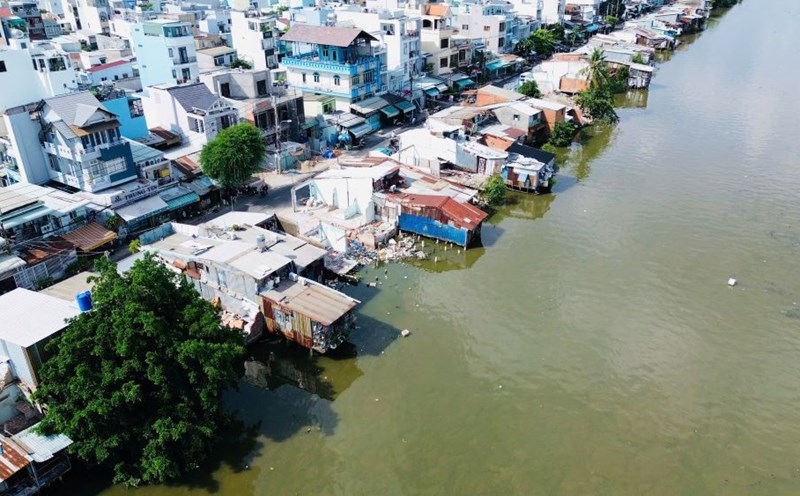A trip by raft and memories of mud
In early August 2024, at the foot of Phieng Nghe village slope, Mr. Tong Van Phong quietly pulled a homemade bamboo raft to pick us up. The whole village was flooded with immense water, the only road disappeared, the stilt houses could only see the roof covered with lumps. The raft is a branch in the middle of the village - also the only fragile bridge connecting people to people, connecting the village to the mainland.
We kept the camera tight and put the notebook in the raincoat. Not because of fear of being wet, but because of fear of missing moments that cannot be repeated a second time - from the eyes of a child nestled behind a wooden door to the bare feet of a mother cooking rice in water that had reached her waist.
Keep your lenses strong in the wind and flood
Working in the flooded area is an unforgettable experience - both pressing the camera, maintaining balance between the rafts, and having to hide one's own fearful moments. At times, the rain suddenly poured down, the wind knocked the raincoats over, mud was up to the knees, but what haunted us most was the peaceful silence of the people without resentment or complaint - just acceptance and adaptation.
Mr. Tong Van Thang - Secretary of Phieng Nghe village Party Cell - looked at the vast flooded area and said: "38 houses are still submerged in water. There are no traces left of kindergartens or primary schools. I have lost everything, but the most serious thing is the disruption of life".
Information about the damage appeared in the records such as dense rivers, more than 40 hectares of corn, 10 hectares of coffee, and 5 hectares of fish ponds were submerged.
We left the village at sunset and tilted over the flooded roof. A chicken stood cowering on the stove, the hammock in the attic was still carried away by the wind. Phieng Nghe was as silent as holding her breath, but in our hearts, that bamboo raft was like a bridge of hope, carrying the story from the flood center to the hearts of readers.
Schools rise after floods
A month later, we returned to the flooded area - this time Chieng Noi, Mai Son district, where we were completely isolated in floodwaters. Chieng Noi Primary School was once submerged in nearly 1 meter of mud. Three suspension bridges connecting the villages were swept away, hundreds of students were stuck. There are days when the teacher has to walk dozens of kilometers, cross hills, banks, streams, to get to school with a cold bag of rice and worries in her eyes.
Ms. Ha Thi Hong - a 5th grade teacher - said: "Every year, preparing for the opening is exciting, but this year it's choking. The bridge is floating, the road is broken, students do not know if they can go to class or not".
But a miracle happened. More than 160 parents brought shovels to school, scooped up mud carrying, cleaned tables and chairs, and repaired every gate. Electric rice cookers, books, and water purifiers were sent by social organizations.
On the opening morning, the flags and flowers were still muddy, but the eyes of the students were bright. The children were carried across the stream, taken across the temporary overflow bridge, and taken to school in clean uniforms. In our hearts, it was the most touching opening ceremony we have ever seen - not only because of the resounding drumming, but because of the indomitable spirit of the people here.
More specifically, at the end of July 2025, when returning to Huoi Sang school, we no longer saw mud or bamboo rafts. The temporary suspension bridge has been replaced with a sturdy overflow underpass, and the road to the school has been concreted.
Mr. Ha Minh Cong enthusiastically shared: "From this year, more than 200 students no longer have to cross the flood to get to class. We are very grateful, especially the press for speaking out in a timely manner.
We stood still in front of the school yard, which was once deeply submerged in mud, now covered in sunlight. A little girl ran by, smiling brightly when complaining: "Honey, today I don't have to walk in the water anymore!"
Writing to preserve beauty in the midst of storms
The work of flooded areas is not only reporting news, but is written with a heart - so that each word of the word not only reflects reality, but also sows hope.
Each framework, each page of the book is a testament to the resilience of the people - and the responsibility of journalists.
And we, the witnesses, have the duty to tell that story, with respect, so that no one turns their backs on the pain and determination of the people in the highlands and border areas.










